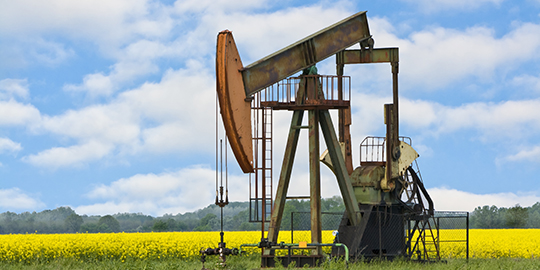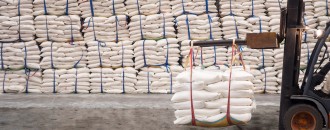
'Use of bio-diesel can reduce India’s oil imports'
Sai Nikesh | The Dollar Business
In an effort to reduce oil imports and bring down the effect of carbon emissions, the Ministry of Petroleum & Natural Gas launched the commercial sale of bio-diesel in the country. The Ministry, on Monday, announced marketing of High Speed Diesel (HSD) blended with bio-diesel in selected retail outlets of Oil Marketing Companies (OMCs) in New Delhi and Vishakhapatnam (by HPCL), Haldia (by BPCL) and Vijayawada (by IOCL). It’s a path breaking step in India’s retail sector for launching bio-diesel B5 (diesel blended with 5% non-edible oil extracted from palm stearin) blend to diesel consumers, the Ministry said in an official release. According to the Union Minister Dharmender Pradhan, bulk users like Railways, Defence and State Road Transport undertaking can directly procure bio-diesel and blend it with diesel as per their needs. The government is willing to extend the programme to all parts of the country, said the Minister, adding, “Such a move will depend on the availability of bio-diesel”. “It is a positive moveand the import replacement can go to the extent the technology accepts the blend. However the fertile land diversion can become an issue, if used indiscriminately,” said Ashu Sagar, Secretary General, Association of Oil and Gas Operators (AOGO), speaking to The Dollar Business. “This movement started with the Cabinet decision of January 16, 2015 allowing direct sales of bio-diesel by private manufacturers to consumers. It got further promoted by the Transport Ministry allowing usage of biodiesel at all ports across the country in the month of February and Haldia became the first green port of the country,” said Sandeep Chaturvedi, President of Biodiesel Association of India (BDAI)”. “However, the key issue remains to be seen is the role of several state governments that apply double tax on biodiesel or keep the Value Added Tax (VAT) neutral, as is the case of excise duty on the blended diesel by the Government of India,” he told The Dollar Business. Tax on diesel is usually rated at around 22-23% and on bio-diesel, it’s around 5%. But, bio-diesel is being subjected to double taxation in combination with diesel, which is definitely hurting bio-diesel sector. Therefore, he said, the states promoting ‘go green’ initiative will definitely be benefited as ‘5% of blending can reduce 40% of emission’. Responding to a query on whether such move would have any impact on oil business, he said, “5% of blending may not have much impact on oil companies. In fact, promoting bio-diesel will definitely build the image of OMCs.” Such moves can reduce dependence on oil imports, but in the long run, as the bio-diesel industry is just in growing stage, he added. Oil companies have already floated a joint tender for the supply of 85 crore litre of bio-diesel from September 2015 to March 2016, the estimated value of which is about Rs 4,250 crore, he said. Ethanol Blended Petrol program (EBP) is also being promoted by the government based on the availability, but, the average is only 3% due to availability issues, said the Minister after the launch of the programme. Whereas, the All India Distillers’ Association (AIDA) differs with the Minister’s statement in terms of the availability and production of ethanol. “Although we have been assuring the Petroleum Ministry about availability of ethanol requirement for 5% blending, only 3% has been achieved on national basisso far.We have been requesting the government to take steps to ensure not only regular supply of ethanol for 5%, but, also to increase the percentage from 5% to10% within next four-five years,” V N Raina, Director General, AIDA, told The Dollar Business. The average annual production of ethanol in the country has been in the range from 2600 to 2700 Million Litres (ML). In addition, the grain-based ethanol production gives about 1300-1500 MLannually, which makes the possible availability of ethanol to approximately 4,200 ML per annum, he noted. This production has to meet the requirements of all the three sectors that use ethanol, namely potable spirit sector (liquors), alcohol based chemicals and ethanol for blending with petrol. The requirement for potable purpose is estimated to be around 2,000-2,200 ML(with a projected annual growth rate of 5-7%), blending with petrol even at 5% rate requires 1,100-1,200 ML and in addition, the requirement of chemical sector is estimated at around 700-800 ML per annum. Thus, the total requirement of all the three sectors can be pegged at approximately 4,200ML and it is evident that the entire requirement of even 5% blending can barely be fulfilled under the present circumstances after meeting the requirements of other two sectors, he noted. It is also evident that under the present state of affairs, even 5% target of blending has not been met so far as we have not been able to cross even 3% of total availability and supplies of ethanol, on all India basis, he pointed out. The AIDA feels that production and consumption of ethanol for blending with petrol purposes and the industry producing ethanol should be encouraged. For this, the industry requests government to ensure easy licensing, total decontrol of interstate movement of ethanol (tax-free), duty-free import of latest technologies and plant & machinery, incentives for distilleries switching over their production from molasses to grains or other raw materials and a committed R&D policy with regard to maximizing the production of ethanol/green bio-fuel, on an urgent basis, he added.
August 11, 2015 | 5:35pm IST.






 to success.
to success.